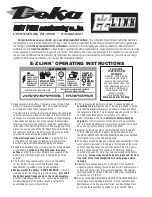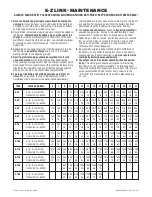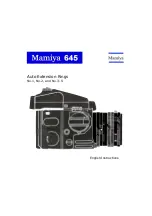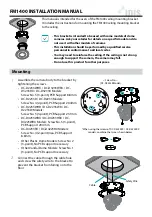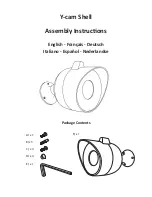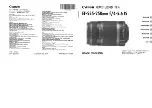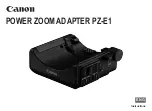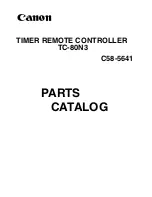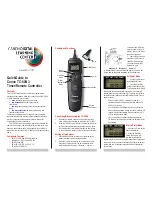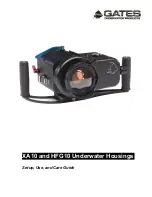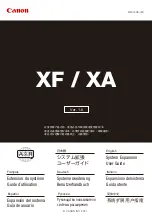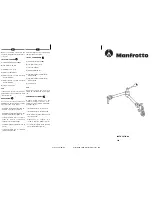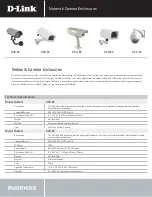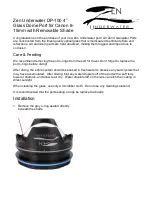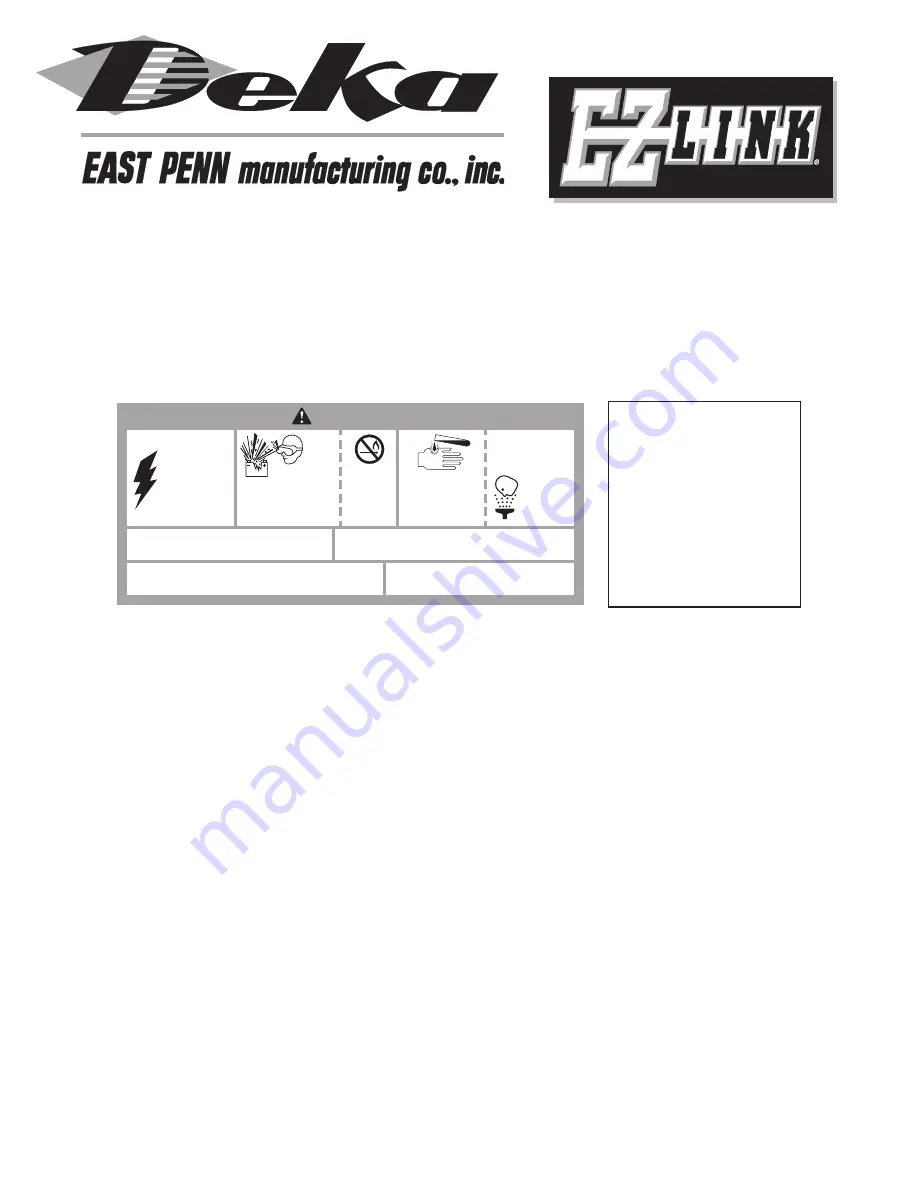
Congratulations on your choice of a new Deka industrial battery.
The complete line of Deka industrial batteries
incorporates every feature required by today’s user of electric industrial trucks. Designed with East Penn engineering
technology and
built by master battery craftsmen
according to strict quality assurance guidelines, Deka industrial
batteries are the
finest available
to meet today’s material handling requirements. Deka precision construction provides
new equipment performance throughout a long life. This battery has been inspected prior to shipment to ensure that it
meets your specifications as ordered. By following the operating and maintenance instructions, you will be ensuring
optimum life and performance of your new Deka industrial battery.
E-Z LINK
®
OPERATING INSTRUCTIONS
®
LYON STATION, PA 19536
•
610-682-6361
1.
Upon receipt of the battery, if there are signs of rough han-
dling or of electrolyte leakage, file a claim with the carrier
and advise your East Penn representative.
The electrolyte level should normally be above the perforated
separator protector, which can be seen in the cell when the
vent caps are removed. However vibrations during shipping
often shake enough gas out of the cell that the electrolyte
level may drop below the separator protector, especially on
taller cells. If the electrolyte level is still above the top of the
plates and can be seen with a flashlight through the holes in
the separator protector, the battery may be given its initial
charge without adjusting the electrolyte level.
If the electrolyte level is not visible
or is below the top
of the plates, check again for leaking cells and call your
East Penn representative before charging the battery.
2.
Check the nameplate of your charger against the nameplate
of the battery to
make sure they both show the same
voltage
and that the six-hour ampere hour capacity of the
battery falls within the eight-hour recharge range of the
charger.
3.
The “Battery Type Identification” shown on the battery
(E, EO, EE, EX) should match the “Battery Type
Identification” specified on the truck nameplate.
4. Make sure that the battery “SERVICE WEIGHT,”
which is
stamped below the lifting hole in the steel tray,
falls within
the battery weight range shown on the truck nameplate.
East Penn Manufacturing Co., Inc. cannot be responsible
for determining that the battery weight is sufficient to
counterbalance your particular truck.
FLUSH EYES
IMMEDIATELY
WITH WATER.
GET
MEDICAL
HELP
FAST.
SULFURIC ACID
CAN CAUSE
BLINDNESS OR
SEVERE BURNS.
NO
• SPARKS
• FLAMES
• SMOKING
SHIELD
EYES.
EXPLOSIVE GASES
CAN CAUSE BLIND-
NESS OR INJURY.
HIGH
VOLTAGE...
RISK OF SHOCK.
DO NOT TOUCH
UNINSULATED
TERMINALS OR
CONNECTORS.
KEEP VENT CAPS TIGHTLY IN PLACE.
VENTILATE WELL WHEN IN AN ENCLOSED
SPACE AND WHEN CHARGING.
SEE INSTALLATION, MAINTENANCE AND OPERATION
INSTRUCTIONS FOR IMPORTANT SAFETY PRECAUTIONS.
REPAIR SHOULD BE PERFORMED ONLY
BY A QUALIFIED SERVICE TECHNICIAN.
DANGER
5.
Prior to placing the battery in service, it should be given an
equalizing charge.
Near the end of the charge, check to make
sure that the electrolyte levels of all cells are visible and above
the separator protector. The full charge specific gravity is 1.280
to 1.295 when temperature corrected to 77°F (25°C).
6.
Upon installation in the truck,
battery restraints should be
adjusted
to restrict movement of the battery to no more than
1/2" in a horizontal direction. An insulated spreader bar should
be used any time the battery is lifted or hoisted.
7.
Batteries normally should not be discharged more than 80%
of their rated capacity for longest service life. Section III of
the DEKA INDUSTRIAL SERVICE MANUAL 0656 gives detailed
information for your specific battery type.
8.
The battery should be placed on charge upon completion of the
work shift and returned to full charge. If at the end of the work
shift the specific gravity has not fallen below 1.230, it is advis-
able to use the battery for another shift. Normally, batteries
should not be used for more than two successive shifts before
recharging.
All vent caps should be kept in place and the steel
tray cover or the truck compartment cover kept open while
charging.
9.
After the daily charge and prior to the start of the workshift,
a specific gravity reading should be taken with a hydrometer on
at least one cell in order to ensure full recharge. The specific
gravity should be between 1.280 and 1.295 when temperature
corrected to 77°F (25°C).
10.
A copy of the DEKA INDUSTRIAL BATTERY SERVICE MANUAL,
which gives more detailed information on the Operation and
Maintenance of motive power batteries, can be obtained from
your Deka representative by asking for form number 0656.
CALIFORNIA
PROPOSITION 65
WARNING:
Batteries, battery posts,
terminals and related
accessories contain lead
and lead compounds, and
other chemicals known to
the state of California to
cause cancer and birth
defects or other
reproductive harm.
Wash hands after handling.

